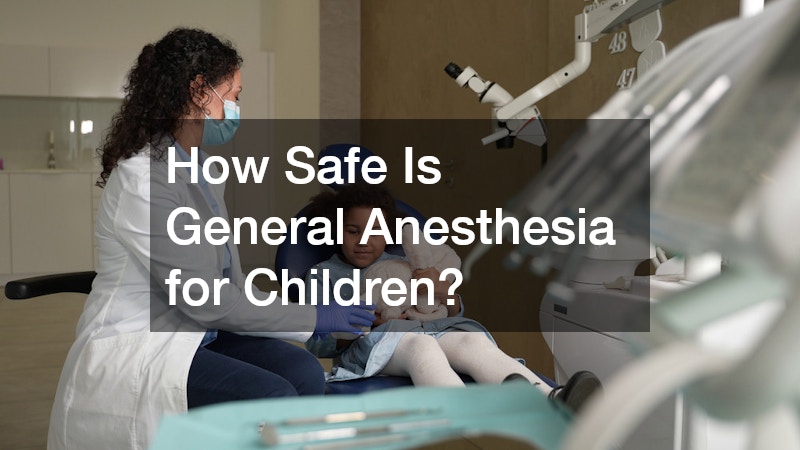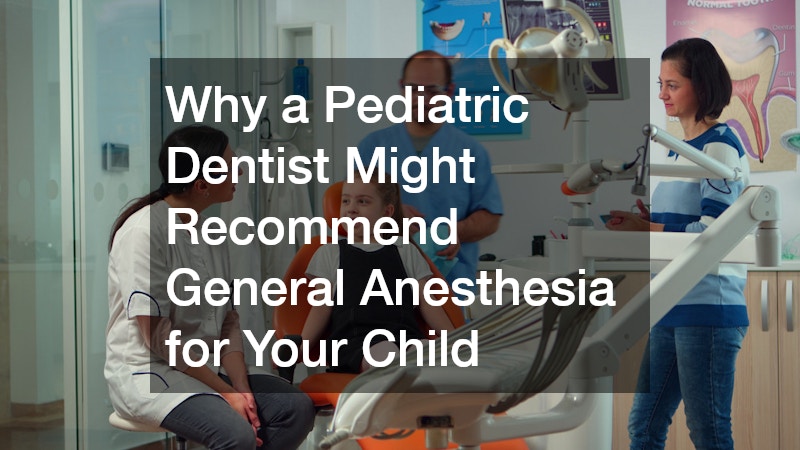Why a Pediatric Dentist Might Recommend General Anesthesia for Your Child
Visiting the dentist can be a stressful experience for many children. In some cases, a pediatric dentist may recommend the use of general anesthesia to ensure a safe and effective treatment. Understanding the reasons behind this choice can help parents make informed decisions about their child’s dental care.
General anesthesia is typically reserved for situations where conventional methods of sedation or behavior guidance may not be sufficient.
What Is General Anesthesia in Pediatric Dentistry?
Definition and Purpose
General anesthesia is a medically controlled state of unconsciousness that allows a child to undergo dental procedures without feeling pain or distress. Unlike local anesthesia, which numbs a specific area, general anesthesia affects the entire body, keeping the child completely unaware of the procedure. The purpose is to ensure both comfort and safety during complex or lengthy dental treatments.
How It Differs from Other Sedation Techniques
Unlike nitrous oxide (laughing gas) or oral sedation, general anesthesia renders the child fully unconscious. Sedation methods such as nitrous oxide allow children to remain awake and responsive, whereas general anesthesia is deeper and requires specialized monitoring. This difference makes general anesthesia suitable for children who are highly anxious, uncooperative, or require extensive dental work.
When It Is Typically Used
A pediatric dentist may consider general anesthesia for procedures that are complicated, lengthy, or difficult for a child to tolerate. Common scenarios include multiple tooth restorations, extractions, or interventions for children with special healthcare needs. It is also considered for very young patients who cannot reliably cooperate during treatment.
Benefits of General Anesthesia for Children
General anesthesia offers several advantages, including reducing anxiety, ensuring pain-free treatment, and allowing the dentist to complete complex procedures efficiently. It also minimizes trauma or psychological stress associated with dental visits, creating a positive experience for both the child and the parent.
Risks and Considerations
Despite its benefits, general anesthesia carries potential risks such as allergic reactions, breathing difficulties, or rare complications related to underlying health conditions. Parents should carefully discuss these considerations with their pediatric dentist to weigh the benefits against possible risks.
Why Would a Pediatric Dentist Recommend General Anesthesia?
Complex or Extensive Procedures
Children requiring multiple fillings, crowns, or extractions may benefit from general anesthesia to complete treatment in a single session. This approach reduces the need for multiple appointments and repeated exposure to stress.
Managing Anxiety and Fear
Some children experience severe dental anxiety or phobias that make conventional treatment impossible. General anesthesia helps the pediatric dentist address these children’s needs safely and effectively.
Health Conditions and Special Needs
Children with certain medical conditions, developmental disabilities, or behavioral challenges may require general anesthesia to ensure a safe and controlled dental environment.
Age and Cooperation Factors
Very young children or those who cannot remain still for long periods are often candidates for general anesthesia. It allows the pediatric dentist to perform necessary procedures without interruptions or safety concerns.
How Safe Is General Anesthesia for Children?
Safety Protocols and Monitoring
Safety is a top priority. Pediatric dentists work with anesthesiologists or specially trained staff who continuously monitor vital signs, oxygen levels, and heart rate throughout the procedure.
Qualifications of the Dental and Anesthetic Team
Only trained professionals with pediatric experience should administer general anesthesia. Their expertise ensures that any potential complications are managed promptly.
Possible Side Effects and Complications
Some children may experience nausea, grogginess, or mild disorientation after anesthesia. Serious complications are rare but may include breathing issues or allergic reactions.
Recovery and Post-Anesthesia Care
Parents should follow all post-procedure instructions, including monitoring the child for any unusual symptoms and ensuring proper rest and hydration.
What Alternatives to General Anesthesia Exist?
Conscious Sedation Options
Nitrous oxide or oral sedation may allow a child to remain calm while staying awake, suitable for less extensive procedures.
Behavior Guidance Techniques
Techniques such as positive reinforcement, distraction, or “tell-show-do” methods help children cooperate during treatment.
Pre-Treatment Consultations
Consultations allow the pediatric dentist to evaluate the child’s anxiety level, medical history, and treatment complexity to determine if alternatives are feasible.
Natural and Holistic Approaches
Some families explore deep-breathing exercises, visualization, or other non-medical methods to reduce anxiety.
How Should Parents Prepare for a Child’s Procedure Under General Anesthesia?
Pre-Procedure Instructions
Follow all dietary and fasting guidelines provided by the pediatric dentist to ensure safety during anesthesia.
Discussing the Procedure with Your Child
Explain in age-appropriate language what will happen, emphasizing that the child will be asleep and won’t feel pain.
Logistics and Scheduling Considerations
Plan transportation, time off work, and any necessary childcare for siblings.
Supportive Measures for the Day of the Procedure
Provide comfort, reassurance, and calm presence to help reduce anxiety.
Evaluating Post-Procedure Needs
Ensure proper follow-up appointments and monitor recovery according to the pediatric dentist’s instructions.
General anesthesia in pediatric dentistry is a valuable tool that allows children to receive safe, effective, and stress-free dental care. A pediatric dentist will consider factors such as procedure complexity, child anxiety, health conditions, and age when recommending anesthesia. By understanding the benefits, risks, and alternatives, and by maintaining open communication with the dentist, parents can ensure the best possible outcomes for their child’s oral health.

